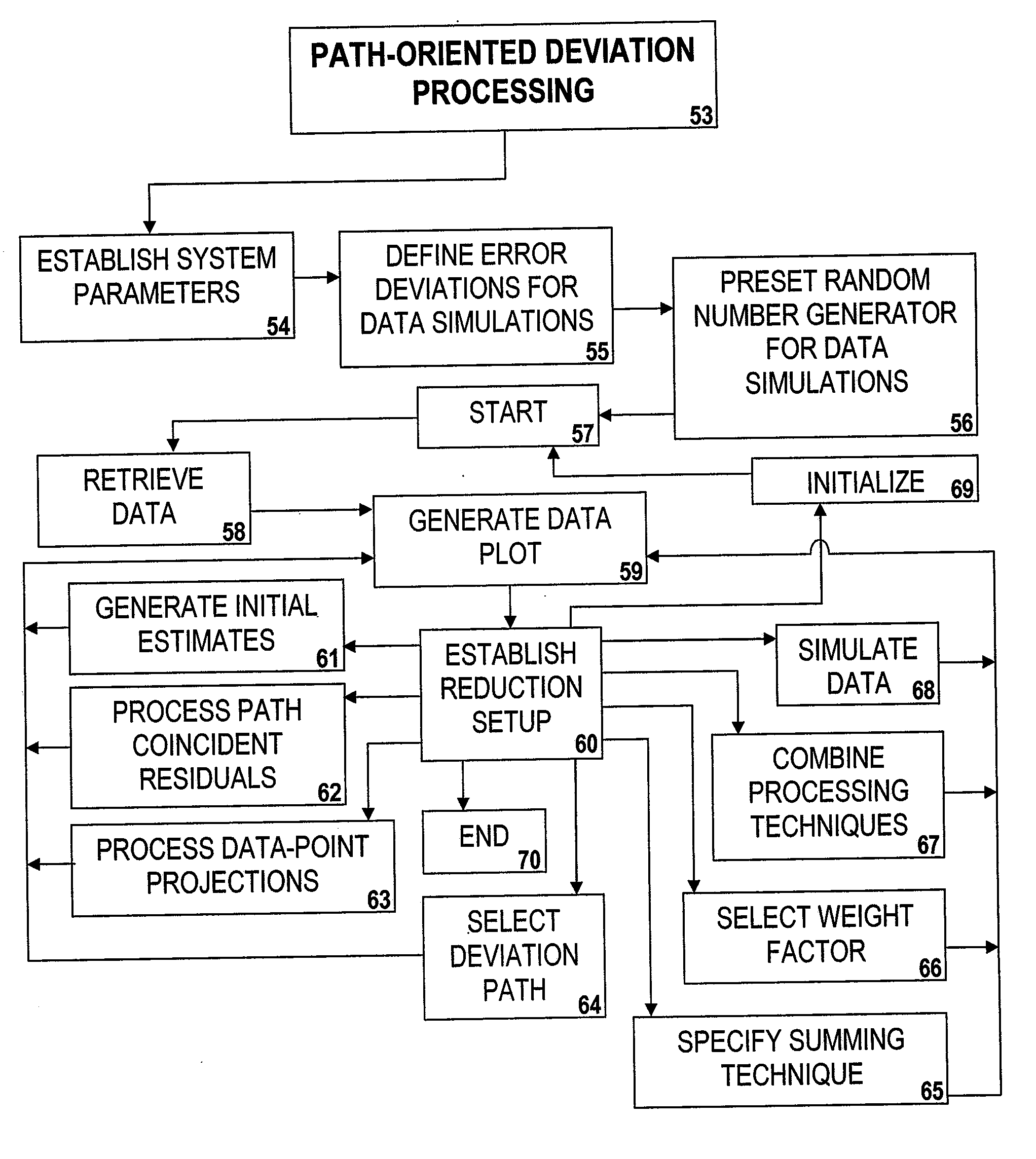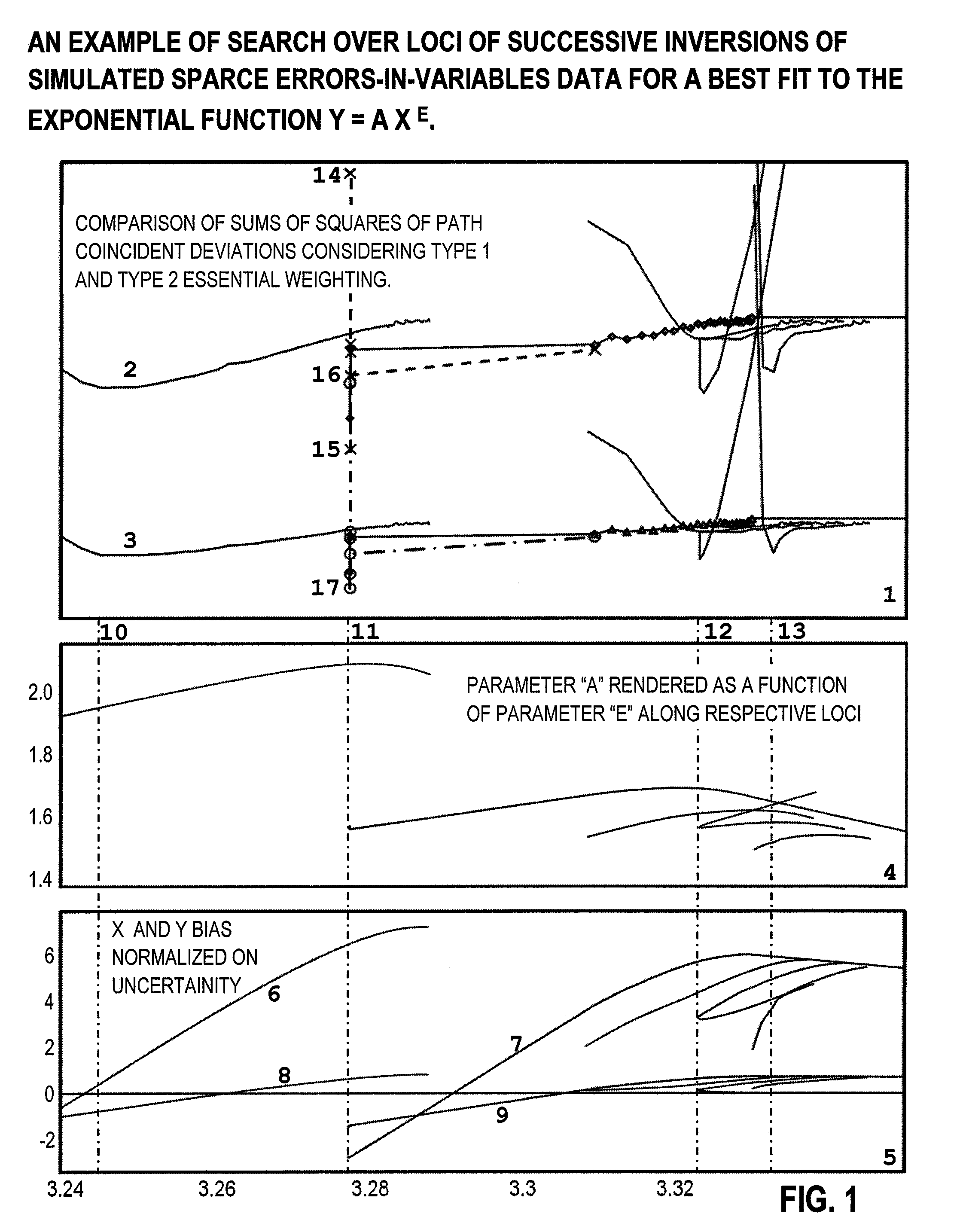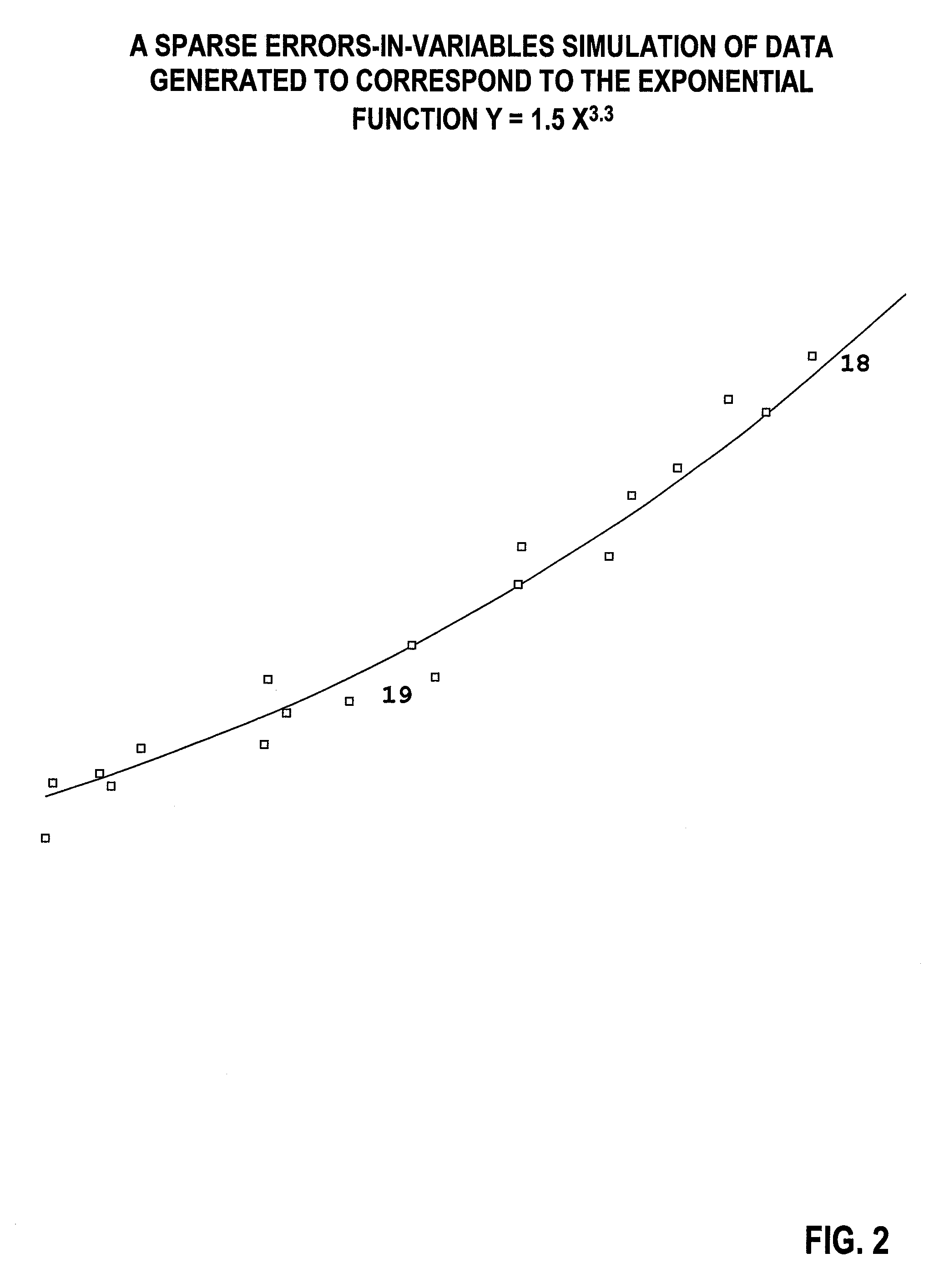Inversion Loci Generator and Criteria Evaluator for Rendering Errors in Variable Data Processing
a variable data processing and inversion loci technology, applied in adaptive control, complex mathematical operations, instruments, etc., can solve the problems of not considering the effects of transverse translation of nonlinearities and heterogeneous probability densities on respective probabilities, and being recognized as unreliable or spurious
- Summary
- Abstract
- Description
- Claims
- Application Information
AI Technical Summary
Benefits of technology
Problems solved by technology
Method used
Image
Examples
example 1
[0207]Consider the following steps for utilizing the exemplary QBASIC code of Appendix A as means of rendering initial parameters and generating at least a start condition for rendering a respective locus of likely data inversions:[0208]1. Render a processing system for operations of DOS QBASIC.[0209]2. Install the DOS operation code and either load the code directly from the QBASIC system, or change the name Locus.txt to Locus.bas so as to render the extension compatible with a QBASIC system manager. (The code may not be compatible with newer systems.)[0210]3. Remove the .txt extensions and transfer the simulation data, from the data folder of Appendix A to a C: drive.[0211]4. Execute the Locus.txt or Locus.bas operational code by pressing F5 followed by an “Enter”[0212]5. Select file E. by pressing “E” followed by “.” (Omit the quotation marks.)[0213]6. Select option “7” to simulate data.[0214]7. Press “1” to simulate data for variable X 1.[0215]8. Press “1” to select simulation o...
example 2
[0264]1. Initiate execution by pressing “F5”“Enter”.[0265]2. Select data file E.[0266]3. Press “71121”“Enter”“Enter”“2121”“Enter”“Enter” to generate a respective form of simulated data.[0267]4. Press “Enter”“Enter”“Enter” to view respective uncertainty and restore the selection menu.[0268]5. Press “151”“Enter” to enter a locus start point for the independent variable.[0269]6. Enter the preferred start point for X. The number that was entered for this example, was 1.62 estimated from step 49 of Example 1.[0270]7. Press “Enter”“2” to enter a locus start point for the dependent variable.[0271]8. Enter the preferred start point for Y. The number that was entered for this example, was 3.28, from the same source.[0272]9. Press “Enter”“3” to enter an estimate of the dependent coordinate bias. The number that was entered for this example was -29619, which is minus the uncertainty in the simulated measurements of Y multiplied by the square root of 2. The minus sign was gleaned from the sign ...
example 3
[0280]Consider the following steps for utilizing the exemplary QBASIC code of Appendix A as means of rendering initial parameters and generating the locus of successive data inversions provided in file 3D.txt:[0281]1. Render a processing system for operations of DOS QBASIC.[0282]2. Install the DOS operation code and either load the code directly from the QBASIC system or change the name Locus.txt to Locus.bas so as to render the extension compatible with a QBASIC system manager.[0283]3. Transfer the data simulation file, from the data folder of Appendix A to a C: drive.[0284]4. Execute the Locus.txt or Locus.bas operational code by pressing F5 followed by an “Enter”.[0285]5. Select file 3D. by pressing “3D” followed by “.”.[0286]6. Press “Enter”“71121”“Enter”“Enter” to select random data for variable X1.[0287]7. Press “2121”“Enter”“Enter” to establish random data also for variable X2.[0288]8. Press “3121”“Enter”“Enter” to also establish random data for variable X2.[0289]9. Press “En...
PUM
 Login to View More
Login to View More Abstract
Description
Claims
Application Information
 Login to View More
Login to View More - R&D
- Intellectual Property
- Life Sciences
- Materials
- Tech Scout
- Unparalleled Data Quality
- Higher Quality Content
- 60% Fewer Hallucinations
Browse by: Latest US Patents, China's latest patents, Technical Efficacy Thesaurus, Application Domain, Technology Topic, Popular Technical Reports.
© 2025 PatSnap. All rights reserved.Legal|Privacy policy|Modern Slavery Act Transparency Statement|Sitemap|About US| Contact US: help@patsnap.com



